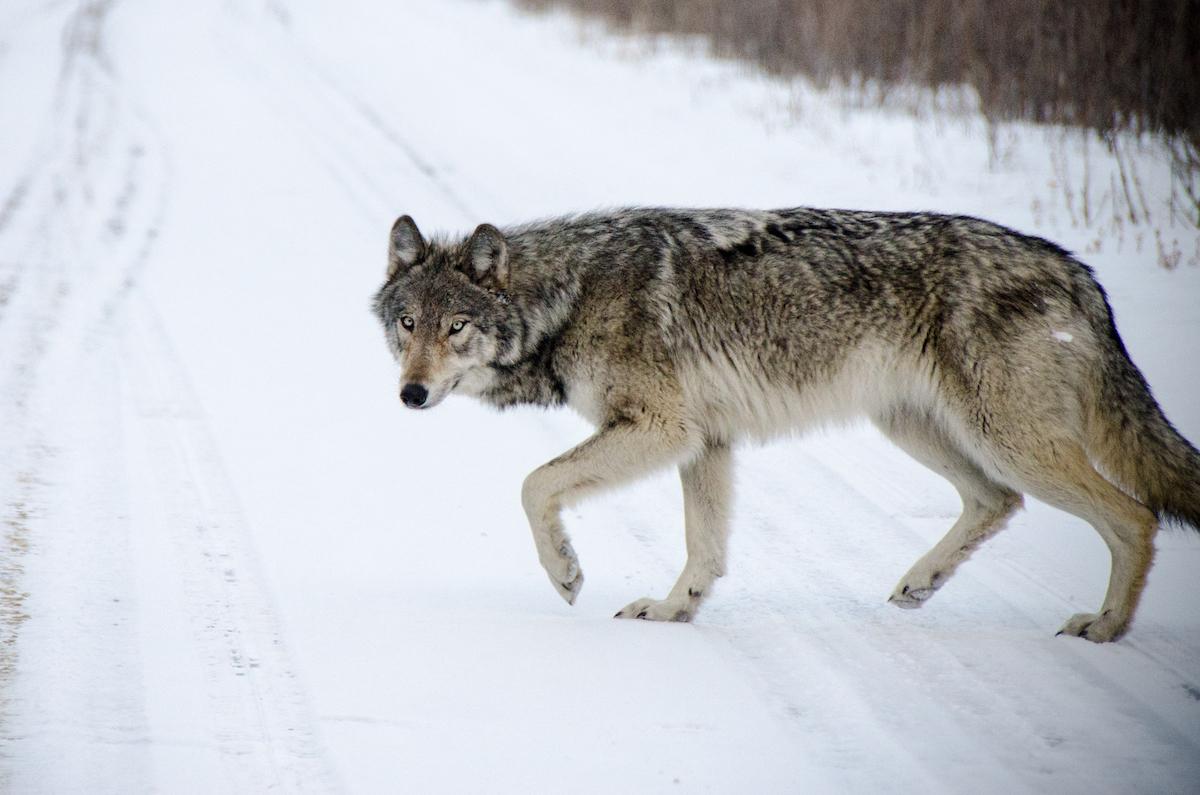
Caribou bulls rutting in Jasper National Park/Parks Canada, Layla Neufeld
A proposed plan to save dwindling woodland caribou herds in Jasper National Park through conservation breeding is moving closer to reality.
Parks Canada is looking at permanently penning up to 40 female and five male southern mountain caribou (a subset of woodland caribou herds) in a remote area of the Alberta park surrounded by an electric fence. The hope is to produce up to 20 calves a year and bring Jasper’s herds back to sustainable levels within a decade.
In January, Parks Canada hosted a virtual workshop, facilitated by Foundations of Success, to review the scientific evidence around conservation breeding. It drew nearly 50 specialists in caribou ecology and conservation from academia, environmental non-governmental organizations, research institutes, international conservation organizations, zoos, federal and provincial governments, and the Aseniwuche Winewak Nation, a steward community of the À La Peche herd on the park’s northern boundary.
The Foundations of Success, in an independent report called “Assessing the Evidence for Adoption of a Conservation Breeding Strategy to Enable Recovery of Southern Mountain Caribou Populations in Jasper National Park,” has concluded that “the evidence overall would strongly support” a decision to move ahead.

The Tonquin Valley landscape in Jasper/Parks Canada, Lauren Beaton
It pinpoints four key issues that must be considered:
• Finalizing caribou sourcing for the conservation breeding program.
• Ensuring that post-release mortality (including from predation) is not above desired levels.
• Developing a plan to protect the breeding centre from wildfire.
• Managing the long-term effects of climate change.
“It is important to note, however, that none of these issues should be `show-stoppers’ and all of them can be addressed through normal monitoring and adaptive management practices,” the report concludes.
Jean-François Bisaillon, acting resource conservation officer at Jasper, stresses that things are still in the preliminary proposal stage. “There is a lot more work to do before we get there,” he cautions, including consulting with Indigenous partner communities and other partners as well as the public. “It’s an exciting project and it’s a great tool, but also there’s no approval to move forward yet. There’s a bit more work to get there.”

Searching for caribou in Jasper National Park/Parks Canada
The stakes are high. “These caribou are an iconic species for most Canadians,” points out Bisaillon. “They’re also a really good indicator of how our ecosystem is and whether it’s healthy.”
Jasper, he explains, traditionally has four caribou herds. The À La Peche herd is the northernmost herd of 150 animals is partially migratory in and out of the park. In the southern part of the park, usually south of the town of Jasper, the Maligne herd has been extirpated (it no longer exists in the wild). The Brazeau herd is down to about 15, and the Tonquin herd hovers around 45. These two aren’t large enough to be self-sustaining because they don’t have enough females who are reproducing.
“We’re at that point where if we don’t add animals, the herd will continue to decline and eventually be extirpated,” warns Bisaillon. “It might take several years, or it might be very quick.”
Jasper’s caribou herds have been relatively stable since 2015, but the methods of counting through annual aerial surveys, scat analysis, remote cameras, radio collars/GPS tracking and population modelling creates an estimate and not precise numbers.

Jasper has seasonal backcountry closures to keep wolves away from caribou habitat/Parks Canada, Layla Neufeld
Threats that originally caused the caribou to decline from elk and wolves have been reduced. Parks Canada usually has seasonal winter closures in all caribou ranges. High elevation and deep snow usually protects caribou from wolves, but not if people are using the area and making paths and tracks.
The plan is to bring animals into captivity, breed them and use their offspring to bolster the Tonquin, and then the Brazeau, herd. “We’ll need to help nature a little bit,” says Bisaillon. It would likely take a decade to reach the desired population level.
About 80 to 120 hectares (200 to 300 acres) of wilderness would be fenced and monitored. There would be multiple interconnected pens — including quarantine and medical pens — with feeders and water troughs. Calves would be taken to lower-intensity management pens as soon as they’re ready so they stay as wild as possible.
It would cost about $25 million ($20 million USD) to establish the captive breeding area and run the program for the first five years with two to four staff. Parks Canada already has a location in mind close to the Tonquin range with good drainage, proper vegetation and enough water. It’s about 50 kilometres (35 miles) south of the town of Jasper and won’t be accessible to the public.
Parks Canada is now looking for partners to source wild caribou from, and the plan would be to start by capturing the remaining animals in the Brazeau herd to get the program going. The plan is to bolster the Tonquin herd to about 200 animals, and then eventually reintroduce the animals in the Maligne and Brazeau areas.
If the breeding program is approved, work could begin in 2022.

 Support Essential Coverage of Essential Places
Support Essential Coverage of Essential Places




Add comment